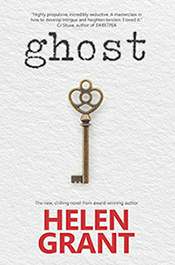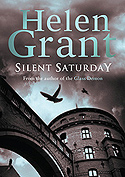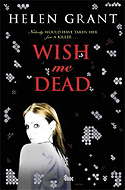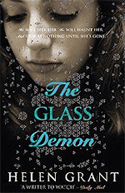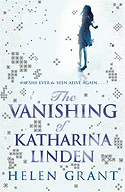About ten days ago I mentioned in a blog post that I had visited the graveyard at Quoig and was very intrigued by what appeared to be a single fragment of wall of a vanished church or chapel. It was not at all obvious
what vanished church it was - even Victorian OS maps referred to it simply as "church" - and I have been attempting ever since to satisfy my curiosity about it.
It is difficult to explain quite why I find such places so fascinating. As I said in my previous post about it, it probably wasn't a significant church in any way; if it were, there would be a lot more information readily available. All the same, I knew I wasn't going to be happy until I had identified it!
I find the whole topic of recorded information about the past interesting in itself. Even the relatively recent past slips away so easily. I remember my childhood in the 1960s and '70s very clearly, but I haven't kept very much from that time - not a single magazine or newspaper, nothing that would tell me what happened on a specific day. We all know the major events of a particular period - wars, coronations, famous deaths - but those are, so to speak, the highest peaks of History's mountain ranges. So many other tiny events occurred that are now consigned to oblivion. I spent a long time this week poring over newspapers from 1919 and 1920, and alongside all the major national events recorded in the news were dozens of small news items: a teenage girl who went missing and whose body was discovered frozen into a lake; a servant girl badly burnt by an accident with an oil lamp; a railwayman run down by a train. All of them personal tragedies that would have seemed enormous to the families involved; all of them now long forgotten.
I felt very much the same when I visited the Paris catacombs a couple of years ago with a friend. The bones of an estimated six and a half million Parisians lie stacked in the catacombs; I went there expecting (if I am honest) a thrill, but came away feeling melancholy. Every single one of those browning skulls was once a person; every single one of them had their own story. And now they are stacked up together, with no way of identifying a single one of them ever again.
Still, before we get too morbid, the thing I find very exciting about researching the past is the feeling of piecing together details to bring part of that vanished time back to life. The more details that can be unearthed, the more vivid the picture. I imagine the past almost as another place, that can be glimpsed as though through a window.
Sometimes the details cannot be conclusively verified, and then we have a probable picture, which to all intents and purposes becomes the truth, because there is no better information available. For example, some years ago I visited Saint Bertrand de Comminges, the scene of M.R.James' story
Canon Alberic's Scrap-book, and attempted to identify the building upon which the sacristan's house in the story is based. Eventually, with the help of the cathedral guides, I was able to make an educated guess. The guides were no spring chickens; at some point they will retire. It is entirely possible that no more accurate information will be uncovered. So has my educated guess effectively become "the truth"? I wonder.
Anyway, to return to the subject of the church at Quoig, I decided to pursue some new lines of attack. There is a first World War memorial in the graveyard there, and according to the Scottish War Memorials' Project's web page, it was unveiled and dedicated on "Sunday 27th October 1920". The website also says that the monument "stood at the southside of the Monzievaird and Strowan parish church, which was built in 1804 and demolished in 1964." I was keen to verify this identification of the church because web searches for "Monzievaird and Strowan" tended to throw up either Monzievaird old parish church, allegedly on the site now occupied by the mausoleum at Ochtertyre, or Strowan parish church, which is ruined but far more complete than the ruin at Quoig and is most definitely separate. I was not finding anything about a church for both parishes located at Quoig.
I decided therefore to try perusing the
Strathearn Herald for October 1920 (below) and see if there was any reference to the dedication ceremony.
The edition for Saturday 30th October contained quite a long description of the dedication, which took place the previous Sunday (ie. 23rd not 27th as stated on the war memorials site), naming the church (then clearly still standing) as Monzievaird and Strowan Parish Church.
I must say that definitively putting a name to the ruined church was not particularly satisfying. There are still so many things I would like to know! Why, for example, was there a vanished Monzievaird church, a ruined Strowan church and a ruined Monzievaird and Strowan church? And what did it look like? (Why, you may be asking by now, do I even care? But as I said last time, I simply can't stand not knowing.)
At any rate, knowing that I was searching for that particular name was a help. Eventually I stumbled onto the "Statistical Account of Scotland" for 1834-45 at EDiNA (the National Academic Data Centre based at the University of Edinburgh). The online archive allows various searches including an alphabetical one, so when my initial search for "Monzievaird and Strowan" failed to turn anything up, I looked under M and discovered that in 1845 it was spelt "Monivaird and Strowan" instead. At last! Some actual information (though still no picture). The account for the parish was given by the Reverend John Ferguson and the relevant passage runs as follows:
"The exact period at which Monivaird and Strowan were united, is involved in obscurity, but it is evident, from the reports of the Commissioners of Teinds from 1661 to 1673, that the union had taken place prior to the year 1662. Each parish had its own church, in which Divine worship was observed every alternate Sabbath, and the communion dispensed every alternate year until 1804, when a new church was erected in a central situation, equally convenient for both parishes. The population being considerably scattered, the majority are from one to two miles from the place of public worship, while very few individuals are distant above three miles. The church is in good repair and affords accommodation for 600 persons. All the sittings are free. It is a remarkable fact, that the incumbency of the last two ministers extended over the long period of 105 years; the Rev. James Porteous having been ordained 4th August 1730, died 25th November 1780; the Rev. Colin Baxter, ordained 23rd August 1781, died 5th January 1835. The present incumbent was ordained 9th June 1835. The manse is distant a quarter of a mile from the church (1837). It is an excellent and commodious house, and regarded as the best planned and finished manse in this district of the country...The number of families belonging to the Establishment (ie. the Church of Scotland) is 128. In these there are 569 individuals of all ages. The number of Dissenting or Seceding families is 14...Divine service is generally well attended; and the average number of communicants is about 300."

(Above: the remains of a section of the south wall; below: memorial plaques from the demolished church.)
For me, the most surprising piece of information from the account of the parish is that the church could accommodate 600 people. It is impossible to tell anything about the architecture from the small chunk of wall that remains, but I had not imagined anything large enough to accommodate so many. To give an idea of probable scale, the parish church at Clachan (Kilcalmnonell) is about 40 years older than the Monzievaird and Strowan parish church was, and seats a similar number; you can read about it on the Royal Commission on the Ancient and Historical Monuments of Scotland site here:
http://canmore.rcahms.gov.uk/en/site/38943/details/clachan+kilcalmonell+and+kilberry+parish+church+and+burial+ground/
I shall keep an eye out for a picture of the church, although I am not terrifically confident that one exists. There was no picture accompanying the article in the Herald, and although I went through every single edition for 1964 I was unable to find any reference to its being demolished that year, nor any picture of its past glories. There was a brief reference in the November 14th edition of that year to a service at the war memorial, "although Monzievaird Kirk is no longer in use", but that was all. As to why the church was eventually disused and demolished, no explanation is forthcoming. However, the location at Quoig, though once "a central situation, equally convenient for both parishes", is pretty remote, and it has been a long time since it could drum up a regular congregation of 600.
If I ever do find a picture of the church, I shall post a link to it, or at the very least describe it. In the meantime, I am happy to have satisfied my curiosity as far as possible - and I've heard of another interesting graveyard, on the road between Innerpeffray and Auchterarder...





























